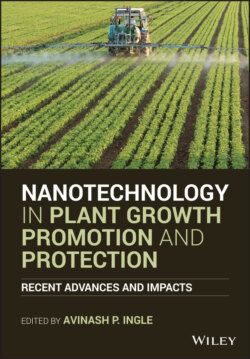Читать книгу Nanotechnology in Plant Growth Promotion and Protection - Группа авторов - Страница 51
3.2.4 Molecular Mechanisms Involved in Effects of Zn NPs on Seed
ОглавлениеCompare to salt‐based Zn, ZnO NPs can enhance Zn delivery to seeds through the particle‐specific mechanisms. Zhang et al. (2015a) suggested that the seed coat (maize) is a greater barrier to the absorption of Zn from ZnO than from ZnSO4; therefore, ZnO show less toxicity. Raskar and Laware (2014) also reported for onion seeds Zn NPs treatment (less than 40 mg/L) substantially increased antioxidant enzymes, including guaiacol peroxidase (GPx), catalase (CAT), SOD, and glutathione reductase (GR). Besides, Sedghi et al. (2013) stated that Zn NPs could play a vital role in the biosynthesis of auxin and gibberellin, resulting in a higher germination rate. However, there is optimal concentration for Zn NPs application, concentration too high can reduce the activity of antioxidant or reducing enzymes. Israel García‐López et al. (2018) found that ZnO NPs (18 nm) applied during imbibition and incubated for 72 hours at 100–400 mg/L induced a significant increase in production of peroxidase and ascorbate peroxidase; however, at 500 mg/L these enzymes were reduced in Capsicum. Therefore, it is crucial to determine the optimal Zn NPs concentration and treatment duration for seed treatment.
